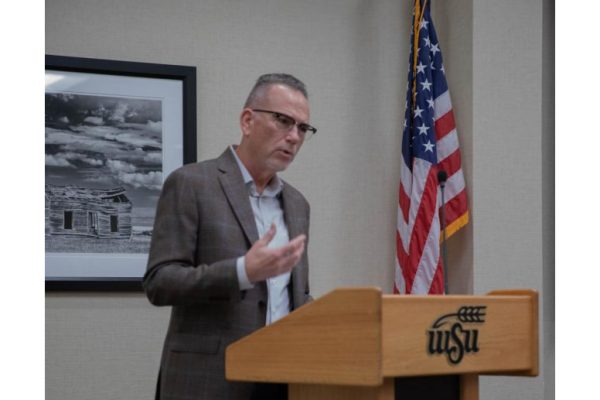OPINION: Critical race theory should be required in K-12 schools
There is a lot of debate about whether critical race theory should be taught in schools. But how many people actually recognize what the term means?
According to Britannica, CRT “is an intellectual movement and a framework of legal analysis” that states that race is merely a social construct and that the legal institutions in America are inherently racist according to Britannica.
This debate has recently made its way to Kansas. The Derby High School Principal Tim Hamblin was ordered to apologize after he showed a video to staff of a Black author sharing her experience of being treated differently at a grocery store because of her race. A staff member then emailed a board member claiming that the video caused a “hostile work environment” and that board member forced the principal to apologize.
Some claim that the legal institutions in America are inherently racist. What does that mean? Simply, it means a variety of items important to life have embedded prejudice or policies that work against minorities — mainly people of color. Where can this prejudice be seen? Housing, health care, environment, education, criminal conviction, to name a few..
For example, Americans still see the effects of redlining today. This started in the 1930s when the government-sponsored Home Owners’ Loan Corporation and the Federal Home Loan Bank Board sought to separate predominantly Black neighborhoods from obtaining services, according to TV network History.
Although the Fair Housing Act of 1968 aimed to end redlining, imprints of previous policy remain prevalent. According to a study by the National Community Reinvestment Coalition, 74 percent of the redlined neighborhoods 90 years ago are low-to-moderate income neighborhoods today; in addition, 64 percent are a majority-minority.
CRT analyzes facts and helps provide a more clear understanding of racism in America and how, even if individuals’ attitudes are not racist, racism is embedded in the policies and institutions that shape their country, and as a result, them.
Recently, there has been a large debate over whether CRT should be taught in K-12 schools. The information taught by the subject is crucial to understanding how racial inequality still persists today, even if some do not see blatant acts of racism in their day-to-day life.
Several states in America, like Arkansas and Oklahoma, have already banned the teaching of CRT, and many states are looking to ban it.
Banning the teaching of CRT in schools poses a question: If certain aspects regarding race cannot be taught in school, what can? Arkansas bills currently in effect have gray areas on what can be taught and what crosses the line. If teachers wanted to teach about historical laws, Jim Crow for example, will they be restricted in their ability to do so? And if so, what does this mean for the education of future Americans?
There are also questions raised about freedom of speech and if laws banning the teaching of CRT conflict with it.
Personally, I think the concept helps educate Americans and promotes the dismantling of systems that have or continue to oppress groups of people. Whether you believe CRT is necessary for Americans K-12 to learn, the proposals to ban the teachings altogether threaten the understanding of people of color’s history in America.

Mia Hennen is the managing editor for The Sunflower. Most recently, Hennen served as editor-in-chief for the 2023-2024 year. A senior English major, Hennen...










